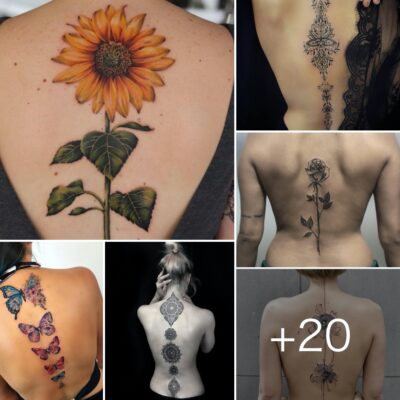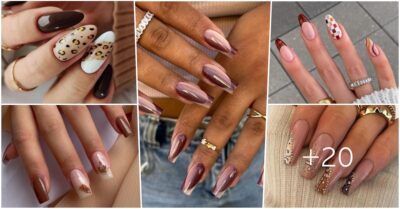Tattoos are becoming popular, even Eastern countries with hidden traditions are gradually adopting this art form widely. But few people know that tattoos have a special place in history.
Are tattoos still taboo at the Olympics?
Tattoos were considered one of the areas of concern before the Covid-19 pandemic drastically changed the story of the Olympics. When there are no spectators or international tourists in Japan, do athletes wearing tattoos, which is taboo in modern Japanese culture, attract negative attention?

In some cultures, tattooing is strictly prohibited. But in many other cultures, they are an integral part of sacred rituals and to mark special events in life.
Modern American tattoo culture can be traced back to the 1700s, but body tattoos in general date back much further – around 3300 BC.

Although today’s popular tattoo trends include a wide variety of styles and designs, many people can have one or more tattoos on their body with their own meaning, some people get tattoos just for fun. “Following the trend” or “just looking good” doesn’t have any meaning.
But the traditional tattoos of ancient peoples across Polynesia, Japan, Egypt and India contain deep socio-cultural and spiritual meanings.
Tattoos are a way of showing status, upholding tradition, honoring religious figures and telling stories.
Lars Krutak’s book “Tattooed Skin and Health” puts it this way: “In many ancient societies, not everyone could arbitrarily tattoo others. The actual process was often done by the leaders, have a special position in the community”.
In the book “The History of Tattoos and Body Modification”, authors Nicholas Faulkner and Diane Bailey wrote: “Tattooing on the body is not only an ancient practice, but is widespread on a global scale. Evidence of tattooing is found in all cultures around the world.Besides that many people get tattoos for different reasons, how do they do this to connect with their community and the world. there”.
The History of Tattoos in Ancient North American Cultures


Areas of Alaska and Canada have many ancient cultures and histories that include tattoos of various types, namely facial tattoos. The tattoo culture of ancient Alaskans, Inuit and Métis dates back at least more than 3,000 years.
Evidence has been discovered that shows tattoo patterns on women’s faces. This practice of face tattooing briefly disappeared sometime in the late 1800s and early 1900s because it was banned by European colonization, but has since been reinstated.
Tattoo designs in these areas are often geometric, dots, and lines. They are tattooed on people on special occasions. “They are personal achievements and the hallmarks of a woman’s life,” Holly Mititquq Nordlum, Iñupiaq-based tattoo artist, told POPSUGAR.
History of tattoos in Polynesia


Polynesia is made up of a diverse group of indigenous peoples living on more than 1,000 islands in the East and South Pacific. This area extends from New Zealand to the Hawaiian Islands and Easter Island. In the 21st century, however, “about 70% of the total population of Polynesia resides in Hawaii”. The people of Polynesia share similarities in culture, language, and beliefs.
According to archeology master Arthur Grainger told The Collector magazine, tattooing in Polynesia is a custom that dates back 2,000 years, including five main styles: Maori, Samoan, Marquesan, Hawaiian and Tahitian. But each region in Polynesia has its own customs.
Traditionally, these tattoos are geometric designs in black ink and represent everything from social hierarchy to spiritual beliefs.
“Soldier tattoos in the cultural tradition are awarded from some merit or merit, not just natural, common throughout Asia, Africa, Melanesia, South America and Polynesia,” says Krutak. “.
Maori tattoos are distinguished by their high aesthetic appeal with thinner lines and intricate spirals. Marquesan tattoos feature large blocks of black ink. Samoan tattoos have repetitive and symmetrical designs. Tahitian tattoos are more naturalistic, with more rounded lines and shapes. Traditional Hawaiian tattoos feature repetitive geometries such as triangles, waves, arrows, and rectangles.
History of tattoos in Egypt
The African continent has a rich history of tattoos.
Egyptian mummies are the earliest examples of human tattoos dating from about 3932 to 3030 BC.
Traditional tattoos in ancient Egypt often included hieroglyphs, which were the main form of communication among the Egyptians at the time. Interestingly, in contrast to some other cultures that tattooed male warriors, the ancient drawings found mostly show that Egyptian women had more tattoos than men.
Joann Fletcher, a researcher in the department of archeology at the University of York in the UK, told the Smithsonian magazine: “Most mummies are mostly dotted and diamond-patterned, sometimes even with a picture. natural images such as animals and plants”.


Faulkner and Bailey said: ‘Among the earliest evidence of tattooing in pictures is the figure of the ancient Egyptian guardian deity – Bes.
Bes (also known as Bisu or Aha) was a dwarf god in the ancient Egyptian religion. He is both the god of war, patron of the pharaohs in battle, and the god of fertility, sex, and is associated with music and dance. The designs are mostly done in black ink.
History of tattoos in Japan


Tattoo culture in Japan is not developing as fast as in other regions, but it has been there since very early. However, tattooing is still considered taboo by many people. This comes from the fact that tattoos have long been associated with organized crime, gangsters in the land of the rising sun.
In the 1600s, the Japanese government began tattooing the bodies of criminals with permanent markings called “bokkei”, as a kind of punishment. This practice was maintained until the 1800s, after which tattooing was no longer a “exclusive” method of the government, but gradually became an art style due to the influence of culture imported into Japan. Copy.
Until now, the stigma against tattoos still exists. Some areas and services in Japan even put up signs prohibiting or not allowing people with tattoos to access.
Now, traditional Japanese tattoos known as “Irezumi”, which translates as “inserted ink”, often feature plants, animals and mythical creatures such as dragons, koi fish, tigers, etc.
History of tattoos in India
India has a very extensive and complex history of tattooing, involving different tribes for thousands of years.

When it comes to India, we often think of the art of body painting – henna. Although not considered tattooing, this form of body art is the most widely known and involves temporary tanning of the skin with red or clay colored dyes.
Henna has gone through quite a vigorous development in India. The designs represented by the art of henna mostly symbolize love, luck and prosperity. That is why Indians often draw henna on the hands of brides during the wedding ceremony.


However, that is not the main purpose of henna. “The art of Henna, known as mehndi in Hindi and Urdu, has been popular in Pakistan, India, Africa and the Middle East for over 5000 years. This art was originally used for natural cooling for people living in hot desert climates,” according to an article from the University of St. Thomas.
In a nutshell, this is just the beginning of a globally diverse tattoo history. Each culture’s prosperous past contributed to the influence of tattoo culture as we know it today.











